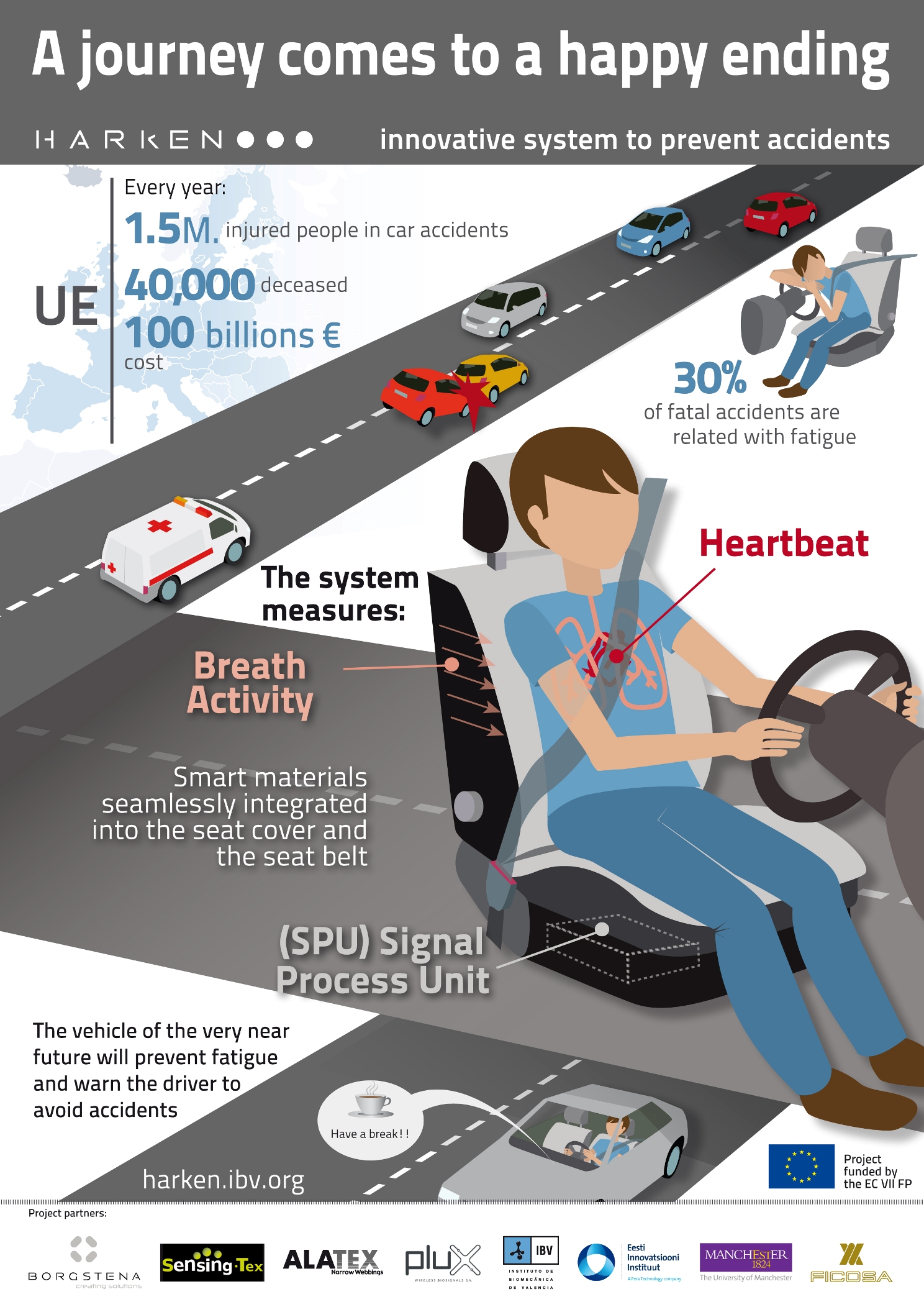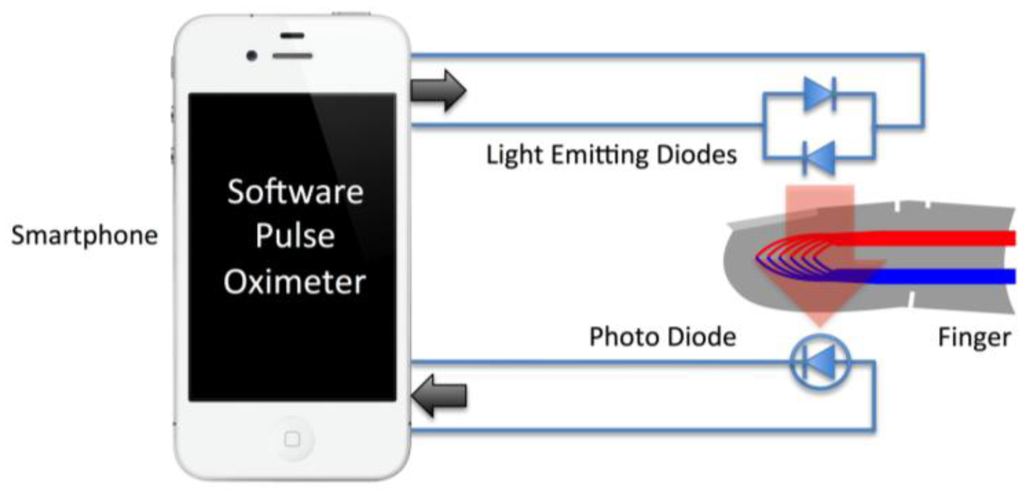Category: Respiratory
-

Built-in, contactless sensors monitor breathing
Novelda’s building-integrated “XeThru” sensor modules detect human presence and monitor respiration. Breath rate and depth are measured and tracked in real-time. The use of radio waves, rather than infrared, ultrasound or light, allows the modules to ‘see through’ a variety of objects, including building materials and blankets. The sensors are intended for hidden, tamper proof,…
-

Sensor seatbelt detects fatigue
HARKEN is a sensor embedded driver’s seatbelt and seat cover that monitors cardiac and respiratory rhythms. Its hidden signal processing unit analyzes the data in real time. The prototype is being developed at Spain’s Biomechanics Institute in Valencia. When the sensor data indicates the person is falling asleep, an alarm will wake the driver. Closed track testing…
-

Phone pulse oximeter detects preeclampsia, pneumonia
Christian Petersen and colleagues at the University of British Columbia have developed a low cost smartphone pulse oximeter. Its light sensor attaches to a user’s fingertip to measure blood oxygen levels. Software analyzes and simply displays the data on a phone, tablet or computer. The phone oximeter can measure heart and respiration rates, and be used…
-

Human body simulation for health research
The Virtual Physiological Human project is a computer simulated replica of the human body that is being created to test drugs and treatments. It will allow physicians to model the mechanical, physical and biochemical functions of the body as a single complex system rather than as a collection of organs. The goal is to offer personalized treatment…
-

Stem cells converted to functional lung cells; could impact modeling, drug screening, transplantation
http://www.nature.com/nbt/journal/vaop/ncurrent/full/nbt.2754.html Columbia professor Hans-Willem Snoeck and colleagues have transformed human stem cells into functional lung and airway cells. This has significant potential for modeling lung disease, screening drugs, studying human lung development, and, ultimately, generating lung tissue for transplantation. The research builds on Dr. Snoeck’s 2011 discovery of a set of chemical factors that can turn human embryonic…
-
Crowdfunded “smart sock” monitors baby’s breathing
http://www.owletcare.com Owlet Baby Monitors has created a baby “smart sock” with sensors that transmit a child’s heart rate, oxygen levels, skin temperature, sleep quality, and sleep position (rollover alerts) to a parent’s smartphone. The company has launched a crowdfunding campaign as it goes through the FDA approval process.
-
Machine learning in the ICU
http://www.technologyreview.com/news/515461/machine-learning-and-risk-prediction-in-the-icu/ Etiometry is building a clinical-decision support system to interpret large volumes of real-time patient data and guide diagnosis and treatment. It integrates and analyzes information from heart monitors, ventilators, and pressure sensors and plugs the data into predictive models that have been built on prior patient outcomes.
-
Fiber optic device for lung disease detection
http://www.cir.ed.ac.uk/news/multidisciplinary-optical-imaging-team-awarded-£115m Researchers at the University of Edinburgh, Heriot-Watt University and the University of Bath have developed a fiber-optic device to detect potentially fatal lung conditions in intensive care patients. Its sensors will also continuously monitor blood in critically ill adults and babies with out the need for blood sampling. The microscopic probe will detect and monitor…